NIL
UConn Women's Basketball Coach Warns of NIL Destroying Parity in College Sports
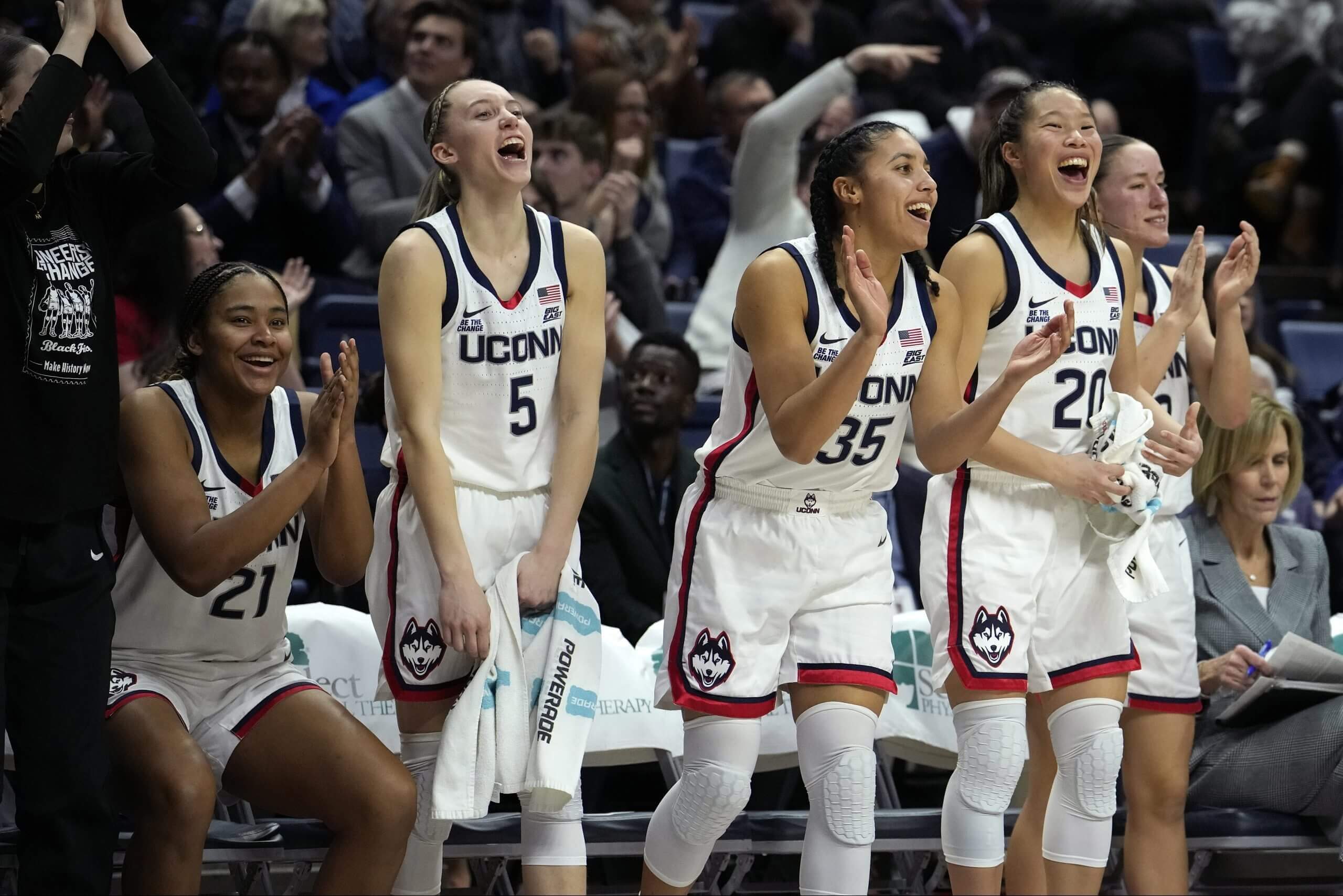


The No. 2 Connecticut Huskies are the women’s basketball NCAA Tournament champions after defeating the No. 1 South Carolina Gamecocks in a convincing 82-59 victory.
However, UConn Huskies head coach Geno Auriemma has no time to ride that high as he looks to the future of college basketball, with a wary outlook on the impact of NIL.
For one, he’ll be without superstar Paige Bueckers after she confirmed she’ll be declaring for the WNBA draft. The challenge to replace her and other playmakers will only get harder.
Revenue sharing will allow for athletes to be paid directly for the use of their name, image, and likeness.
Cora Hall of USA Today reports that Auriemma was blunt in his assessment he shared with reporters ahead of the NCAA Tournament Final Four.
“It will ruin parity,” Auriemma said. “That’s number one. I’m for revenue sharing. But there will be less parity in the game of basketball.”
Monday is the final approval hearing for the historic House vs. NCAA settlement that received preliminary approval in October. Auriemma sees a bleak reality for women’s sports, particularly with the allocation of the funds.
The cap for the total amount schools will be allowed to pay to athletes annually is expected to start at $20.5 million this upcoming athletic year and increase each fiscal year. How those funds are awarded among each school’s stars is at the sole discretion of college athletic departments.
After the Final Four for the men’s basketball NCAA Tournament featured all No. 1 seeds for the first time since 2008, it dampened hopes that Cinderella stories could still exist in the NIL landscape.
Auriemma pointed directly to the evaporation of parity in men’s basketball that gets worse each year as money dominates the direction of the sport.
While many of the same teams are going to continue vying for the coveted Final Four sports, as competitive programs tend to sustain success, Auriemma sees the underdogs disappearing entirely.
“When you do those kinds of things and it is money-driven, it’s going to be, who is going to become the Dodgers and Yankees?” Auriemma said. “How many of those are you going to have, and how many other programs in women’s basketball will be Milwaukee and Kansas City? Because that’s where we’re headed.”
Not only did Auriemma not hold back on his thoughts on revenue sharing ruining parity, but he also went as far as to assert that programs will likely circumvent the cap and widen the gap.
“You think anybody in their right mind is going to stick to the cap?” Auriemma said. “That might be what’s on the books, but that ain’t going to be the final number.”
When the top coach in the sport warns about the future before the end of the NCAA tournament, it should raise concerns about the future of college basketball’s postseason.
NIL
Chambliss adds AT&T NIL deal after strong season at Ole Miss – HottyToddy.com
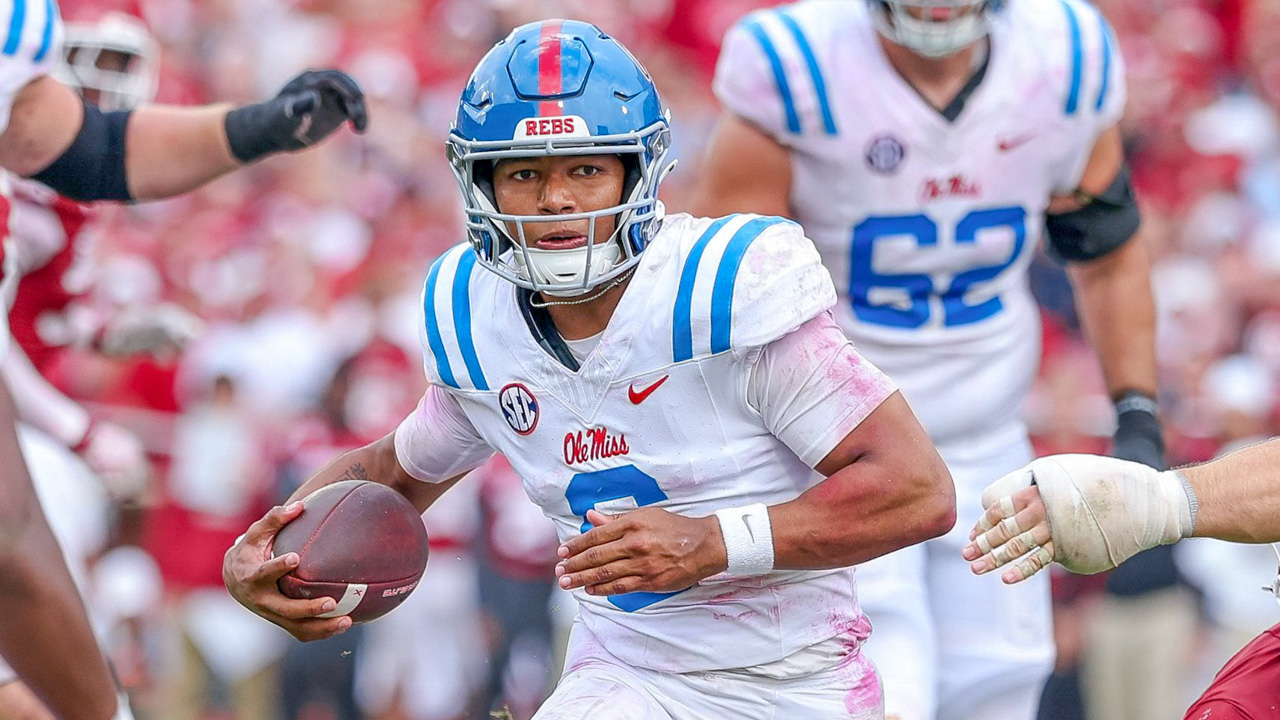
Trinidad Chambliss did not expect his season to unfold this way.
The Ole Miss quarterback arrived in Oxford as a transfer hoping to compete, learn, and settle into a steady role.
Instead, he finished the fall as a First-Team SEC selection and one of the most talked-about players in college football.
His latest news added another step to his rise, as Chambliss announced a major name, image, and likeness partnership with AT&T.
The deal was revealed through a national commercial that used humor and the language of the transfer portal.
In the ad, Chambliss sits in a living room with friends as they ask whether he plans to “transfer.”
After a pause, he answers, “If you wanna win, you go with the best.”
The twist — he is “transferring” to AT&T, not a new program. It was a simple message, delivered with ease and confidence, and it signaled how far his public profile has grown.
Chambliss admitted in the commercial that the moment still feels unusual.
He said he would have thought someone was “crazy” if they had predicted he would be in this type of spotlight. But his play changed everything, and his journey from Ferris State to Ole Miss became one of the most followed stories across the SEC.
His season took shape after starting quarterback Austin Simmons went down with an early injury. That opened the door for Chambliss to get his chance.
He quickly took hold of the job, lifted the offense, and kept the Rebels stable in a year when the margin for error was tight.
From the moment he stepped in, Chambliss brought command and mobility. His ability to run and throw gave Ole Miss a balanced attack that fit well with its personnel.
Over the final two months, he ranked among the league’s top quarterbacks and helped Ole Miss stay in the postseason race.
The Rebels believed they had solid depth entering the year, but Chambliss offered something more. He became the center of the team’s identity and one of the clearest examples of how the transfer portal can reshape a season.
Even Arkansas fans, watching as the Razorbacks navigated roster changes, saw how one player’s move could shift a program’s direction.
Heading into winter, Chambliss’ name carried weight both on and off the field, and companies noticed.
The AT&T deal became the latest sign his impact is reaching far beyond the box score.
Production places Chambliss among SEC’s best
Chambliss completed 218 of 333 passes for 3,016 yards, 18 touchdowns and three interceptions. His consistency helped Ole Miss settle into its offensive rhythm as the season progressed.
He also rushed 118 times for 470 yards and six touchdowns, finishing with 3,486 total yards.
His statistical rise showed how quickly he adapted to SEC play. For long stretches, he averaged more than 300 yards per game and kept drives alive with timely scrambles and smart reads.
Coaches praised his decision-making and his willingness to manage tough moments without forcing plays.
Chambliss often talked about the role his time at Ferris State played in shaping his mindset.
At the Division II level, he won awards and led a successful offense, but he believed taking a step to the SEC would show him a different level of competition. That belief proved correct, and he handled the transition with poise.
As Ole Miss piled up wins, attention grew. His leadership steadied the Rebels during close games, and fans responded to his calm presence. National media outlets highlighted his story, and discussions about his future expanded.
It was during that rise that NIL interest intensified.
The AT&T announcement confirmed the momentum. Though financial terms were not disclosed, the partnership showed that corporations now view college quarterbacks as voices capable of appealing to broad audiences.
It also reflected the changing nature of college football. NIL deals shape the landscape, and a player like Chambliss now balances his on-field duties with growing visibility off it.
Programs across the SEC, including the Hogs, track these developments closely. NIL structure affects recruiting, retention, and how players evaluate their opportunities.
Chambliss’ deal served as another example of how today’s game operates.
What comes next for Ole Miss quarterback
For the Rebels, the deal supports the program’s wider goals. Chambliss has become a central figure and a dependable leader for a team seeking long-term stability.
His growth reinforces what Ole Miss wants to build moving forward, both in recruiting and in performance.
Chambliss said the journey has been unpredictable but rewarding. He remains focused on his development as he balances new expectations and responsibilities. The next steps in his career will hold weight as Ole Miss prepares for its future on offense.
Key takeaways
-
Trinidad Chambliss secured a major NIL partnership with AT&T after a strong season at Ole Miss.
-
His rise from backup to First-Team SEC quarterback showed the power of the transfer portal.
-
The shifting NIL landscape, which affects programs like the Razorbacks, continues to reshape college football.
NIL
Scott Frost found another fall guy to blame for his own failings
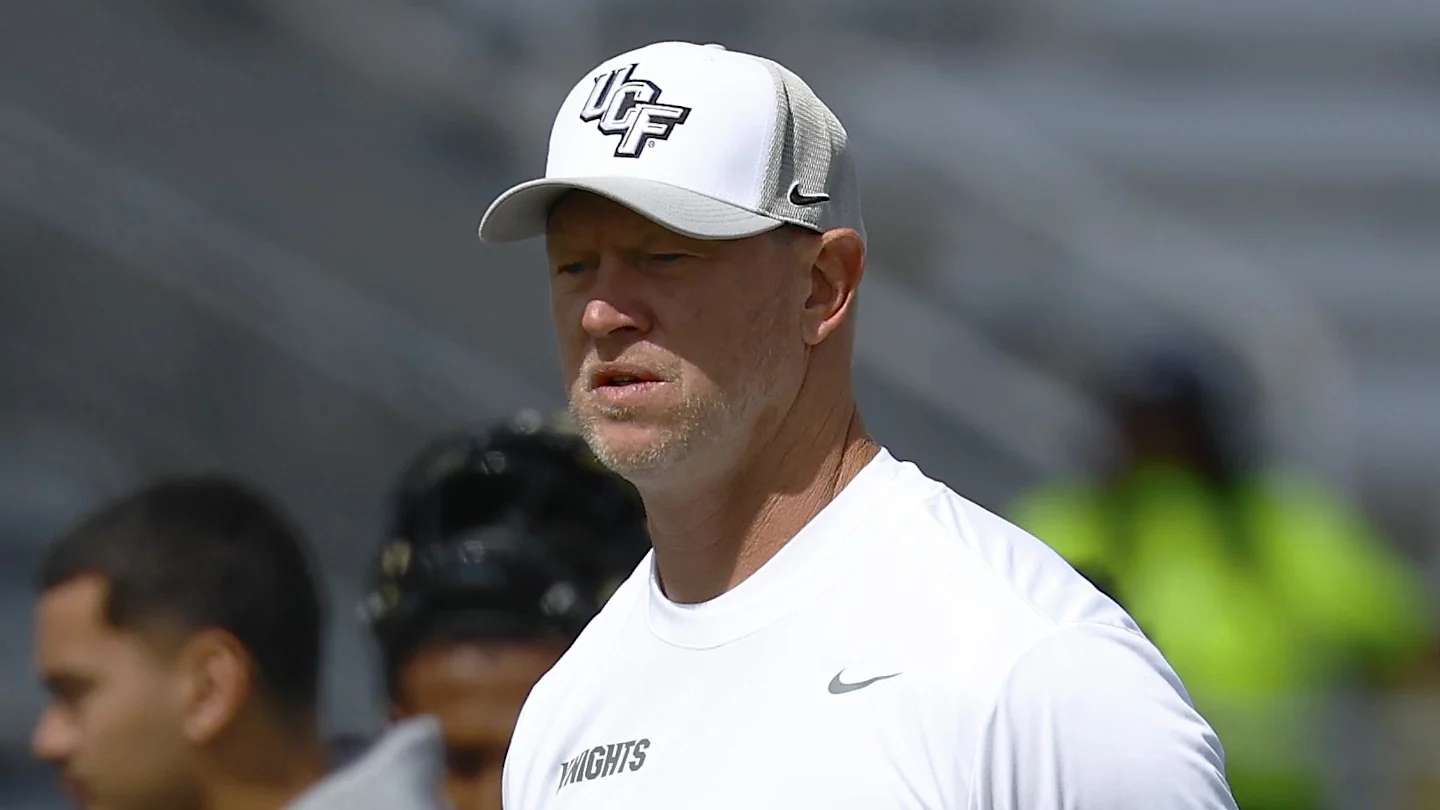
As the Nebraska football team prepares for its second straight bowl game, UCF and Scott Frost are doing a post-mortem on just why they suffered through another losing season. To the surprise of no one, when Frost talked about what went wrong and how he would fix things, he did not point the finger at himself. Instead, he lined up another fall guy. This time, the blame fell on NIL and the transfer portal.
“It’s broken,” Frost said during the Signing Day press conference. “College football’s broken. Yeah, I don’t know if you’ll get that honest answer from everyone, but everyone would agree if they were honest.”
It’s worth pointing out that the former Nebraska football coach isn’t saying anything that many failed coaches have said before him. Even if he tried to paint it as though he was departing some never-before-heard wisdom.
Scott Frost when asked at UCF at his National Signing Day Presser today how NIL has changed over the last few years he starts his answer with, “It’s broken. College football is broken.” But listen to what he went on to say! Oh my. @MyNews13 pic.twitter.com/ZBAaGIaanx
— Spectrum News Asher Wildman (@AsherWildman13) December 3, 2025
Former Nebraska coach Scott Frost blames NIL, transfer portal for UCF’s losing season
Frost then told a story that may or may not have actually happened.
“I laugh about it now, but I did my press conference last year and had a couple players and their agents waiting outside my office five minutes after I did my press conference to start telling me how much money I needed to pay them, and I didn’t even know who the kids were.”
“We’re going to know our team now. We’re going to know our strengths and weaknesses. I think we’re in a better financial position to approach this.”
This is hardly the first time that the former Nebraska coach and storied quarterback blamed forces beyond his control for his failures. It’s not even the first time he’s done it since joining UCF. He spent most of his first offseason with the Knights last year, blaming everyone but him at Nebraska for his getting fired after 4.5 seasons.
Frost has demonstrated plenty of times that he hasn’t changed much since he ran Nebraska. That’s bad news for UCF fans who are hoping for improvements in 2026 after the team went 5-7 this season and was a late rally away from going 1-8 in the Big 12 with a loss to the worst team in the conference. Who will be the fall guy next year if Scott Frost does that again.
NIL
Predicting the College Football Playoff after Georgia wins SEC title over Alabama
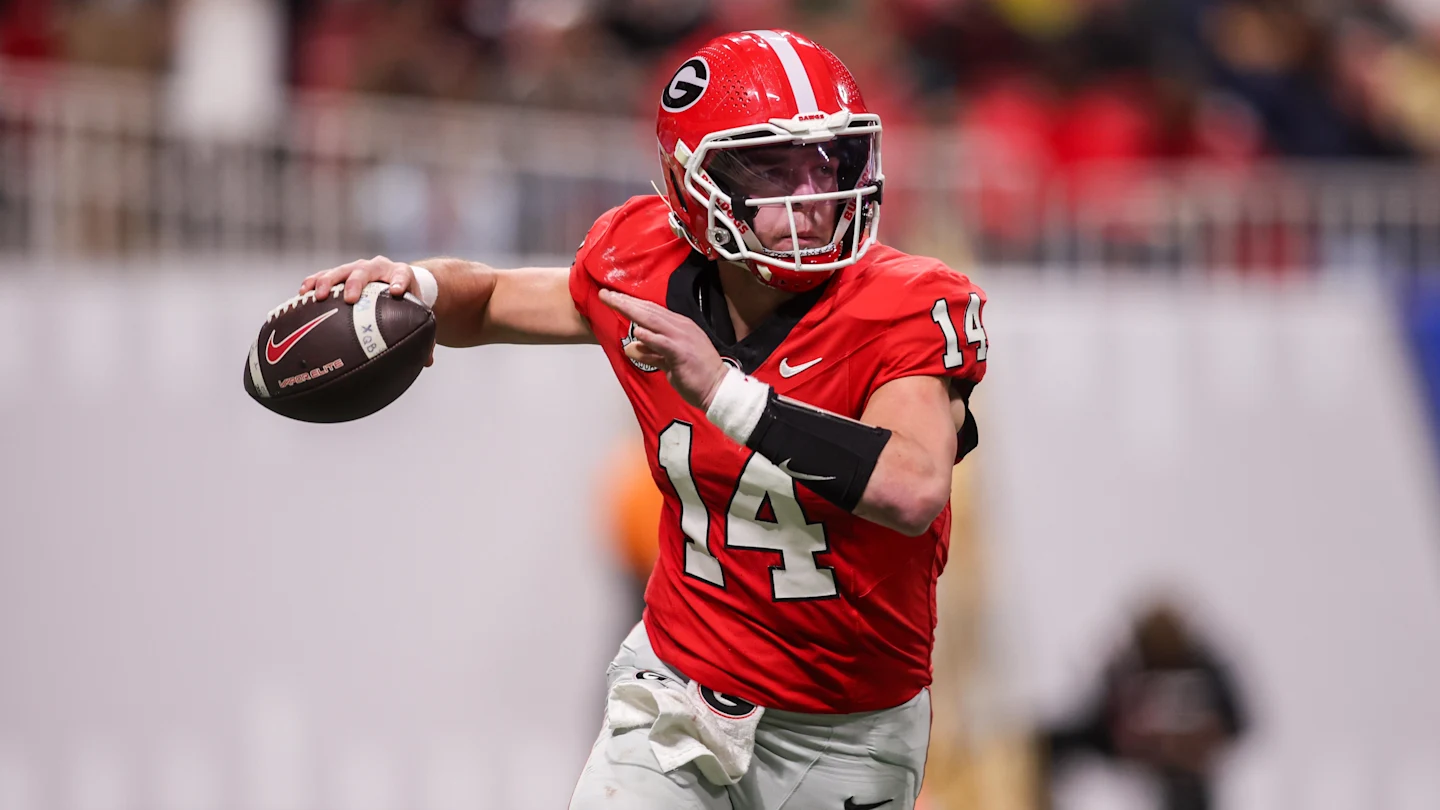
Coming into the SEC Championship Game, there was a kind of consensus that both Georgia and Alabama would make the College Football Playoff no matter what. Almost no matter what.
All that had to happen was that Alabama lost a close game to Georgia, and they would be in. Sixty minutes later, the Bulldogs may have finally disproved that theory.
Kirby Smart notched a needed and rare win over the Crimson Tide in dominating fashion to win the SEC championship, avenging the team’s one regular season loss, and potentially throwing Kalen DeBoer’s team right out of the national title hunt a second-straight season.
Until now, we had maintained that Alabama would stay in the playoff even with a loss to Georgia, but the nature of how that loss played out could finally pave the way to resolve the biggest controversy facing the selection committee coming into Selection Day.
Predicting the College Football Playoff bracket after Georgia beat Alabama

Subject to change pending other Championship Saturday results
1. Ohio State. We’re still projecting that the Buckeyes will finish the season undefeated by handing Indiana its first loss and claim the Big Ten championship, ensuring their hold on the No. 1 overall seed in the playoff.
2. Georgia. A dominant win over Alabama to avenge their one regular season loss and win the SEC championship helps propel the Bulldogs into the No. 2 seed and likely ends its counterpart’s playoff ambitions.
3. Texas Tech. One of college football’s most dominant defenses had a day against BYU, forcing four turnovers en route to a signature Big 12 championship victory and taking a firm hold on a first-round playoff bye.
4. Indiana. We still expect the Hoosiers’ prospective loss to Ohio State to be close enough, combined with IU’s total resume, to keep them in the top four and get the bye.
5. Oregon. That one loss the Ducks had this season came against Indiana, so they should stay behind their Big Ten counterpart as a result.
6. Ole Miss. No Lane Kiffin, no problem. The selectors showed no indication they’ll punish the Rebels after the coach’s departure, so we should see them host a first-round game in the playoff.

7. Texas A&M. Undefeated until the regular season finale, that loss cost the Aggies a shot at the SEC title, but they’ve done enough to host a game in the first round.
8. Oklahoma. That strong defense helped put the Sooners back into the playoff picture, and it’s there they stay, but it’ll be up to John Mateer and the offense to live up to their end of the bargain to keep them there.
9. Notre Dame. The selectors kept the Irish ahead of the Hurricanes despite their head-to-head loss in the opener, and they should move ahead one spot after the Alabama loss.
10. Miami. There was a chance that Alabama could stay in the bracket even by losing to Georgia, but the nature of that loss could be enough for the selectors to move the Hurricanes back in, but still possibly behind the Irish team they beat given how insistent the committee has been to preserve that ordering.
11. Virginia. We still expect the Cavaliers will do enough to save the ACC some major embarrassment and beat Duke for the conference title.
12. Tulane. A strong defensive outing helped propel the Green Wave to a victory over North Texas to win the American championship and stay as the Group of Five’s highest-ranked team.
What the College Football Playoff would look like today
12 Tulane at 5 Oregon
Winner plays 4 Indiana
11 Virginia at 6 Ole Miss
Winner plays 3 Texas Tech
10 Miami at 7 Texas A&M
Winner plays 2 Georgia
9 Notre Dame at 8 Oklahoma
Winner plays 1 Ohio State
More college football from SI: Top 25 Rankings | Schedule | Teams
Follow College Football HQ: Bookmark | Rankings | Picks
NIL
10 most-expensive buyouts of the 2025 college football coaching carousel
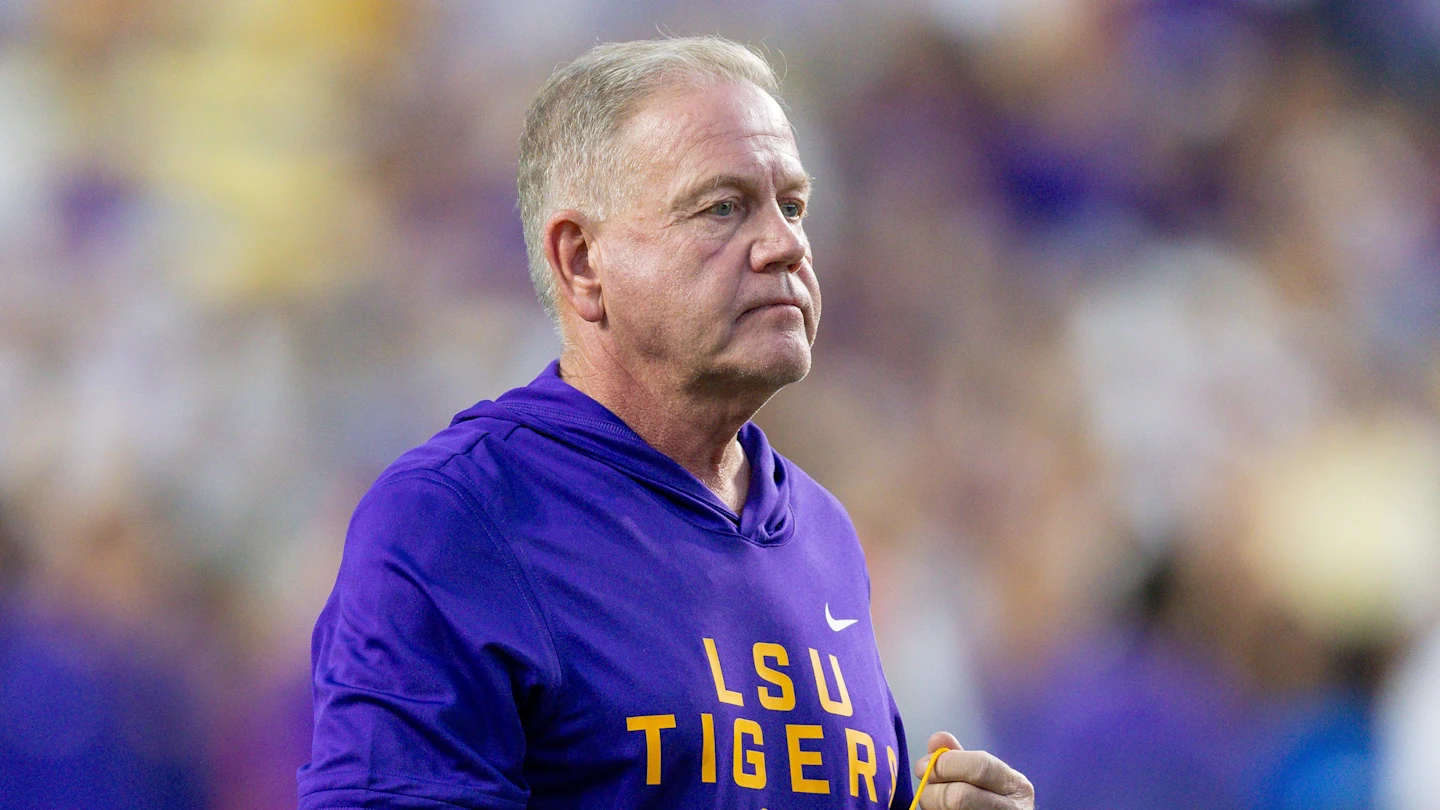
Brother, can you spare $200 million? Apparently, ten top college football programs could (collectively) in 2025, as the sum total of the 10 highest buyouts paid in the college football coaching cycle added up to that figure. It’s worth recalling that these teams paid over $200 million to NOT be coached by ten decidedly unpopular and now former head coaches. Of course, some of these buyouts are subject to mitigation, which will reduce the ultimate amount. Others might be settled (including one listed that already was settled).
Here is a rundown of the ten highest-dollar buyouts being endured in the 2025 college football coaching roundup.
10. Brent Pry (Virginia Tech, $6 million)
Pry was ditched after an 0-3 start to the 2025 season, which left him at 16-24 in his Virginia Tech tenure. On the bright side, Pry’s $6 million buyout was relatively affordable, freeing Tech to make a splash with its next coaching hire… about whom we have more to say.
9. James Franklin (Penn State, $9 million)
One guy who comes out of the coaching shifts smelling like a rose is Franklin. Franklin was owed somewhere between $47 million and $54 million by Penn State, which would have placed him likely second on this list. He negotiated a much lower buyout figure, moved on to his next job, and freed Penn State to secure another viable head coach.
8. Sam Pittman (Arkansas, $9.8 million)
Pittman was 32-34 at Arkansas and was given the boot. He’s still very much in the realm of (relatively) affordable buyouts and hiring Memphis’ Ryan Silverfield shouldn’t break the bank for the Hogs.
7. Justin Wilcox (California, $10.9 million)
Wilcox was 48-55 at Cal and never won over eight games in a season at the school. Oregon coordinator Tosh Lupoi is the new Bears boss.
6. Mike Gundy (Oklahoma State, $15 million)
The decline of Gundy has been one of the more surprising dips in college football. He was 170-90 at Oklahoma State, finished in the top ten in 2021, and won 10 games in 2023. But he’s out and North Texas’s Eric Morris got the nod for the job.
5. Hugh Freeze (Auburn, $15.8 million)
On the other hand, Freeze’s departure was incredibly predictable. In three seasons at Auburn, he was 15-19 and failed to post a winning season. Freeze’s contract reportedly included no mitigation clause, so the Tigers are on the hook regardless of where and when Freeze finds his next coaching role.
4. Billy Napier (Florida, $21 million)
Napier seemed to have survived a rough season at Florida after a late rally last year led to an 8-5 finish. But after a brutal early 2025, he was cut loose with a career 22-23 mark. Even his hefty buyout did not stock Florida from reportedly offering Lane Kiffin $13 million per year to coach the Gators before Florida ended up going after Tulane’s Jon Sumrall as their consolation prize.
3. Jonathan Smith (Michigan State, $33.5 million)
In actual gameplay, Smith was 9-15 in two seasons. Five of the wins were vacated by the NCAA, but even giving him the full benefit of 24 games, a buyout of over $1.3 million per actual game coached is something. To say nothing of nearly $4 million per game won (or over $8 million per NCAA-credited win).
2. Mark Stoops (Kentucky, $38 million)
Formerly the longest-tenured coach in the SEC, Stoops was sent packing after two straight non-bowl seasons. His 72 wins (actually 82 before some NCAA retrospective tinkering) is a Kentucky record. His willingness to allow the University to space out the $38 million instead of paying it in full in 60 days was indicated as a positive part of Kentucky’s ability to make a quick transition to Oregon offensive coordinator Will Stein.
1. Brian Kelly (LSU, $54 million)
Unlike the stories of James Franklin and Mark Stoops, it doesn’t sound like Kelly has gone quietly into the night. After initial disagreements, Kelly filed suit to try to claim every cent of the $54 million he contends that LSU is contractually obligated to pay him. The university seemingly backed down by admitting that his firing was without cause. Kelly was 34-14 at LSU, which certainly threw caution to the wind despite the massive buyout with a huge contract for new coach Lane Kiffin.
NIL
Texas Tech beats BYU for Big 12 title, likely CFP 1st-round bye
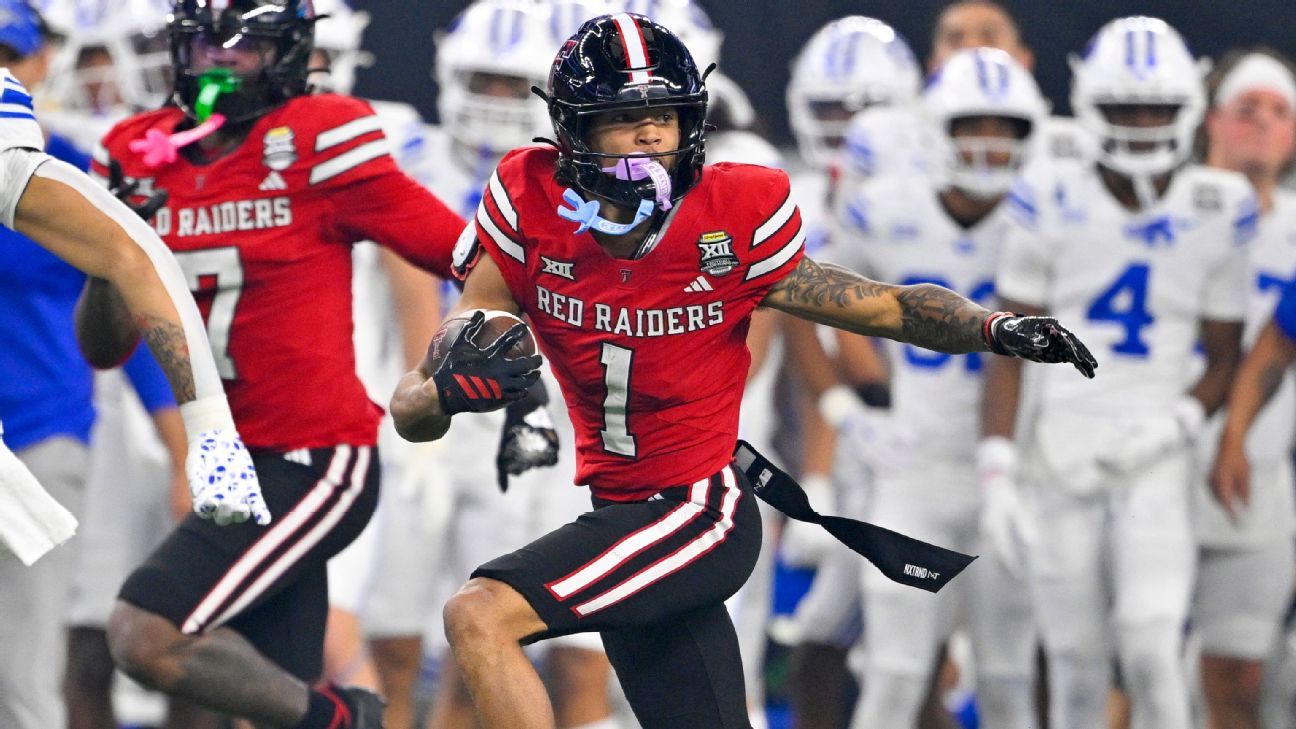
ARLINGTON, Texas — Texas Tech’s all-in bet just paid off.
After an offseason of big dreams and bigger spending, the No. 4 Red Raiders secured their first Big 12 championship in program history Saturday with a 34-7 rout of No. 11 BYU.
It was another dominant display from a 12-1 squad, unlike any seen in Lubbock, one that fuels even more confidence about a deep College Football Playoff run.
After the confetti fell inside AT&T Stadium and coach Joey McGuire hoisted a trophy he had been chasing for four years, he fought back tears as he embraced billionaire board chair Cody Campbell, general manager James Blanchard, athletic director Kirby Hocutt and the many stakeholders who helped set up this program for a historic season.
Together, they ended decades of frustration for a Texas Tech football program that hadn’t won an outright conference title since 1955. When the Red Raiders built their trophy room as part of their $242 million new training facility, they reserved a space for a Big 12 trophy.
In place of hardware, a small block rested on the trophy stand with one word printed on it: “BELIEVE.”
For McGuire, the tears started in the final minutes against BYU, but he said they’ll be flowing again when he returns to Texas Tech’s football building Saturday night and walks past that block.
“That’s when it’s really going to hit me,” McGuire said. “And then, we’ll move it to another space so we can go get another trophy.”
Texas Tech assembled what can now be called one of the greatest transfer portal classes of this evolving era of NIL and transfers in college football, a group of 22 incoming transfers that yielded 11 players who started in the Big 12 title game, four first-team All-Big 12 performers and a projected first-round draft pick in pass rusher David Bailey.
Blanchard believed from the beginning that the Big 12 was not equipped to compete with what the Red Raiders had assembled. The results of that ambitious roster-building experiment: Every Texas Tech victory has been by more than 21 points.
“Mission accomplished,” Blanchard told ESPN. “It’s proof of concept. We’ve got an opportunity to go win a national championship, and I like our chances.”
Texas Tech’s more than $25 million investment for its 2025 roster, blending proven returning starters with high-profile newcomers, created boom-or-bust stakes and a seasonlong narrative — that the Red Raiders were desperately trying to buy their way to the top.
Even after defeating BYU on Saturday, Texas Tech players were asked to respond to the perception that they had built “the best team money could buy.” Linebacker Jacob Rodriguez, a returning senior and the Big 12’s Defensive Player of the Year, was happy to answer that one.
“If we are going to buy a team,” Rodriguez replied, “why not be the best?”
Campbell offered no apologies as he watched Red Raiders coaches and players celebrate Saturday.
“I’m just so proud,” Campbell told ESPN. “The credit goes to the guys who are actually in the arena. These men love each other. They played so hard, so tough. I’m just so proud of this staff, I’m so proud of the university and the alignment we have, all the support we’ve gotten from so many people. It’s been a team effort, the whole effort, the whole way.
“We all came together and had a singular mission, a singular focus, and we got it done. This is something we’ve been waiting on a long time at Texas Tech.”
They got it done with a Red Raiders defense that, as it has this season, made BYU’s offense fight for every yard.
The Cougars opened the game with a well-scripted, 14-play, 90-yard touchdown drive that took nearly seven minutes. They mustered just 110 yards on 45 plays the rest of the day and turned it over four times in the second half, including two interceptions by Tech linebacker Ben Roberts.
“I think we can play with anybody in the country,” Campbell said.
The championship victory should guarantee a top-four seed for Texas Tech and a first-round bye in the College Football Playoff. McGuire said the three-week break ahead will be much needed for his team to recover and prepare for its first playoff run.
“We’re football banged-up,” McGuire said. “If you let us get healthy, I really believe we’ve got another gear.”
Quarterback Behren Morton has been playing with a hairline fracture in his fibula that forced him to miss two games, including the Red Raiders’ lone loss to Arizona State. Morton told ESPN he’s feeling “about 70 percent” healthy and is looking forward to more recovery time.
The quarterback and his coach privately agreed in June that they would win a Big 12 championship this year. And when they did, they planned to walk off the field at AT&T Stadium together.
Before Morton grabbed the game ball, threw his arm around his coach and headed to a locker room filled with celebration and cigar smoke, the senior offered a prideful grin.
“There were a lot of people saying preseason that Texas Tech better do it,” Morton said. “Well, guess what? We did it.”
NIL
Georgia targets $390K from Damon Wilson II in landmark NIL dispute
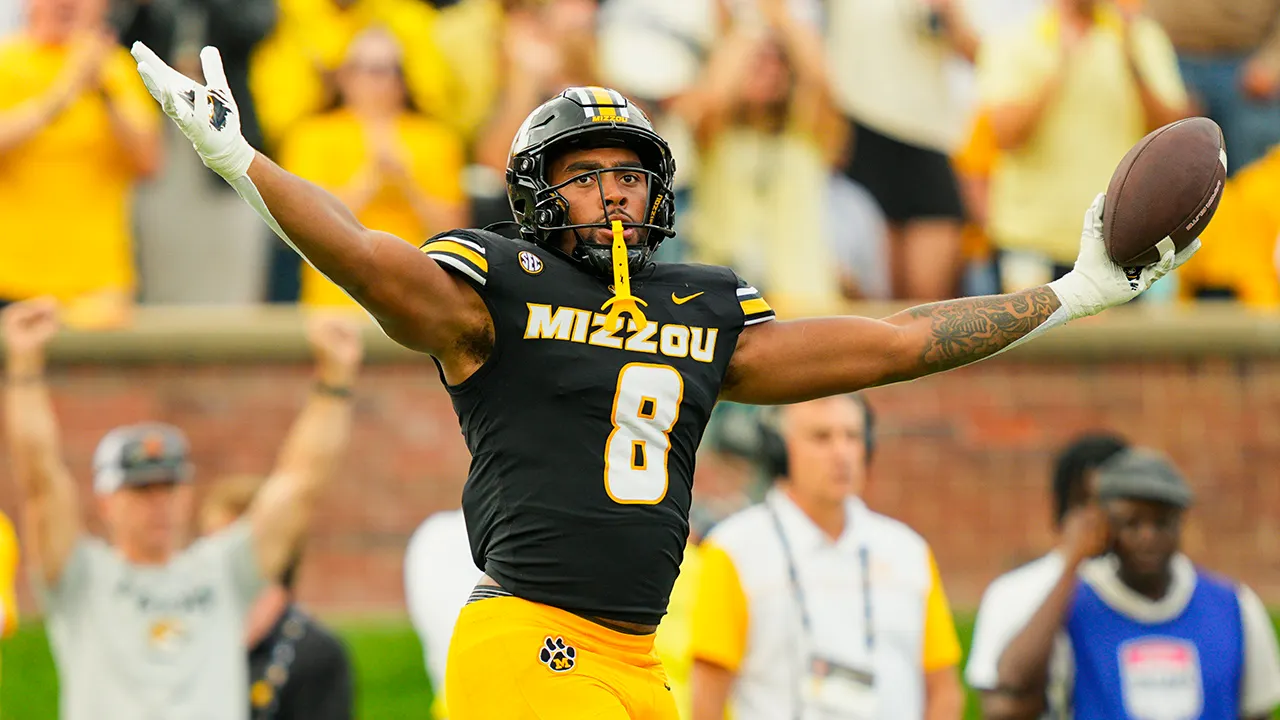
NEWYou can now listen to Fox News articles!
The University of Georgia Athletic Association is taking legal action against one of the football team’s former star pass rushers.
Georgia is asking for damages totaling $390,000 after defensive end Damon Wilson II elected to transfer to Missouri after the 2024 season.
The department cited an NIL buyout clause in Wilson’s contract and requested that a judge compel the defensive end to enter arbitration to reach a settlement. The clause in Wilson’s former agreement effectively acts as a buyout fee for terminating early.

Missouri Tigers defensive end Damon Wilson II celebrates after recovering a fumble during the second half against the Alabama Crimson Tide at Faurot Field at Memorial Stadium Oct. 11, 2025, in Columbia, Mo. (Jay Biggerstaff/Imagn Images)
Wilson was recently served a court summons, legal records show.
CLICK HERE FOR MORE SPORTS COVERAGE ON FOXNEWS.COM
After recording 3.5 sacks during his freshman and sophomore seasons at UGA, Wilson inked a new deal with Georgia’s Classic City Collective. In January, just two weeks after landing the new contract, Wilson made the switch to Missouri.
Wilson had nine sacks in his first regular season with the Tigers.

Georgia Bulldogs helmets on the bench during the Georgia spring game at Sanford Stadium in Athens, Ga., April 12, 2025. (Dale Zanine/Imagn Images)
The formation of collectives has become more common at schools across the nation. Many collectives include liquidated damages clauses in their agreements with players to try to protect financial investments in athletes and discourage transfers.
Wilson reportedly received payouts totaling $30,000 under the terms of his latest deal with Georgia before he left Athens, Georgia. The athletic association argues Wilson owed the $390,000 sum within 30 days of his departure.
CONFERENCE CHAMPIONSHIP GAME PICKS, PREVIEW: WHAT TO EXPECT IN INDIANA-OSU, MORE
“When the University of Georgia Athletic Association enters binding agreements with student-athletes, we honor our commitments and expect student-athletes to do the same,” Georgia spokesperson Steven Drummond said in a statement to ESPN.
Wilson could not be reached directly for comment. Missouri-based attorneys Bogdan Susan and Jeff Jensen are representing Wilson. Susan argued that Wilson’s career decisions were never motivated by money.

Damon Wilson II (8) of the Missouri Tigers against the Mississippi State Bulldogs at Faurot Field at Memorial Stadium in Columbia, Mo., Nov. 15, 2025. (Jeff Le/Getty Images)
“After all the facts come out, people will be shocked at how the University of Georgia treated a student-athlete,” Susan said in a statement. “It has never been about the money for Damon. He just wants to play the game he loves and pursue his dream of playing in the NFL.”
CLICK HERE TO GET THE FOX NEWS APP
Georgia’s move marks one of the first times a school has publicly sought NIL damages from a former athlete over an alleged breach of contract. The dispute sets the table for potentially setting a precedent on whether liquidated damages clauses will act as an effective, defensible replacement for more traditional buyout fees.
However, it should be noted that Arkansas’ NIL collective did retain the services of an attorney to try to enforce a buyout clause in quarterback Madden Iamaleava’s deal. Iamaleava spent his freshman season with UCLA. Wide receiver Dazmin James also left Arkansas, prompting his former school to file a complaint.
Follow Fox News Digital’s sports coverage on X, and subscribe to the Fox News Sports Huddle newsletter.
-

 Rec Sports2 weeks ago
Rec Sports2 weeks agoFirst Tee Winter Registration is open
-

 Rec Sports1 week ago
Rec Sports1 week agoFargo girl, 13, dies after collapsing during school basketball game – Grand Forks Herald
-

 Motorsports2 weeks ago
Motorsports2 weeks agoCPG Brands Like Allegra Are Betting on F1 for the First Time
-

 Sports3 weeks ago
Sports3 weeks agoVolleyball Recaps – November 18
-

 Motorsports2 weeks ago
Motorsports2 weeks agoF1 Las Vegas: Verstappen win, Norris and Piastri DQ tighten 2025 title fight
-

 Sports2 weeks ago
Sports2 weeks agoTwo Pro Volleyball Leagues Serve Up Plans for Minnesota Teams
-

 Sports2 weeks ago
Sports2 weeks agoSycamores unveil 2026 track and field schedule
-

 Sports2 weeks ago
Sports2 weeks agoUtah State Announces 2025-26 Indoor Track & Field Schedule
-

 Motorsports1 week ago
Motorsports1 week agoRedemption Means First Pro Stock World Championship for Dallas Glenn
-

 NIL6 days ago
NIL6 days agoBowl Projections: ESPN predicts 12-team College Football Playoff bracket, full bowl slate after Week 14























































